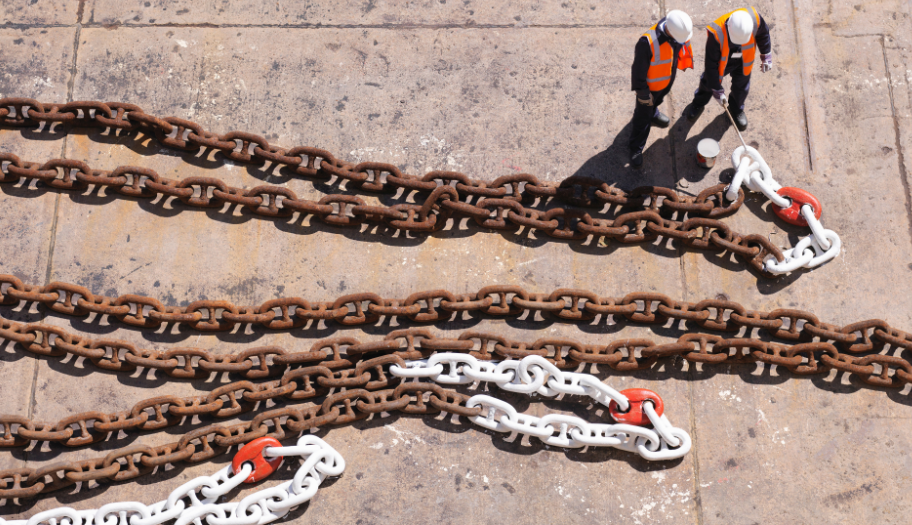
boats have been a part of human societies for centuries and as such, their propulsion technology has changed over time. In this article, we will explore how boat anchors work and their importance in maritime transport. From ancient siege engines to modern container ships, boat anchors play an essential role in moving goods from one place to another. So if you’re ever stuck on a deserted island and wondering what happened to the boats, read on to find out!
What is a Boat Anchor?
A boat anchor is a weight or device attached to the bottom of a vessel to keep it from drifting. It can also be used as an emergency stop or mooring system. Boat anchors fall into two main categories: internal and external.
How Does a Boat Anchor Work?
A boat anchor is a device designed to keep a boat anchored to the ground. Boat anchors are made of different materials, including metal, concrete, and weights.
The most common type of boat anchor uses weights to hold the boat in place. The anchor system consists of two or more weights connected by a cable or chain. When the boat is anchored, the weights pull on the cable or chain and hold the boat in place.
Boat anchors can also use metal cables or chains. When a boat is anchored using metal cables, it holds itself in place by friction. Metal cables are stronger than chains, so they can hold a heavier boat in place.
Another type of boat anchor uses concrete blocks. Concrete blocks are shaped like small cubes and weigh about 100 pounds each. When a boat is anchored using concrete blocks, the blocks form an island around the propeller shafts and rudder. The weight of the ship prevents the propellers from turning and the rudder from moving.
What are the Different Types of Boat Anchors?
There are a few different types of boat anchors, but all of them work in essentially the same way. The anchor is connected to the boat by a cable or chain, and it sits in the water with its weight pulling on the chain or cable. This tension holds the boat in place, and if there’s anything else hanging down from the boat (like a line), it’ll also keep the boat from drifting away.
Different anchors use different weights to hold different boats in place, but they all work essentially the same way. There are two main types of anchors – stationary anchors, which sit in one spot and hold your boat in place, and dynamic anchors, which move with your boat and help keep it stable.
When Should You Use a Boat Anchor?
A boat anchor is a device used to secure a boat to a pier, dock, or another waterway. A boat anchor consists of a heavy weight attached to a line or chain. When pulled from the water, the weight slows the boat and prevents it from drifting away.
Most boat anchors are designed to hold a boat in place for up to four hours. It is important to use a boat anchor if you plan to stay overnight in your boat or if the dock where you are anchored is unstable.
How to Remove a Boat Anchor
The boat anchor is a weight at one end of a line attached to the boat and the other end to an object such as a pier or rock. When the boat moves, the anchor pulls on the line, keeping the boat in place.
To remove a boat anchor, first, find the anchor. It may be at the bottom of the water with a chain attached or on a post close to shore. If it’s on a post, cut the chain with bolt cutters. If it’s at the bottom of the water, use a hook and cable to pull it up.
If you have only one anchor, tie a rope around it and pull up until it’s clear of the water. If you have more than one anchor, first tie one rope around each anchor and get them ready to be pulled up. Then pull together all ropes until all anchors are clear of the water.
How to Test If a Boat Anchor is Fit for Use?
Testing if a boat anchor is fit for use involves using the following steps:
1. Check the weight limit of the boat. The anchor must be able to hold the weight of the boat and crew.
2. Operate the anchor at its designated speed. The Anchor should grip the bottom securely.
3. Check for sound or vibrations when pulling on the chain or rope. If there are any signs of weakness, replace the anchor before using it.
4. Inspect the anchor for wear and tear. If it shows signs of damage, replace it.
5. Inspect the anchor for rust. If there is rust, it must be removed before using the anchor.
Advantages and Disadvantages of Boat Anchors
An anchor is a device attached to a vessel to prevent it from drifting and can include a variety of different features.
Advantages of Boat Anchors
Boat anchors are often strong and reliable, providing an effective way to keep boats stationary in areas where there is no other anchor available. They’re also generally lightweight and easy to deploy, making them ideal for use in sheltered waters or near cliffs.
Disadvantages of Boat Anchors
Anchors can be challenging to use in difficult or windy conditions, as they may become caught on rocks or other obstacles. Additionally, if the anchor gets caught on something solid, it can pull the boat along with it, potentially causing damage.
Conclusion
A boat anchor is a weight that can be tied to a line or buoy and used as an emergency drag to bring a sinking vessel to the surface.